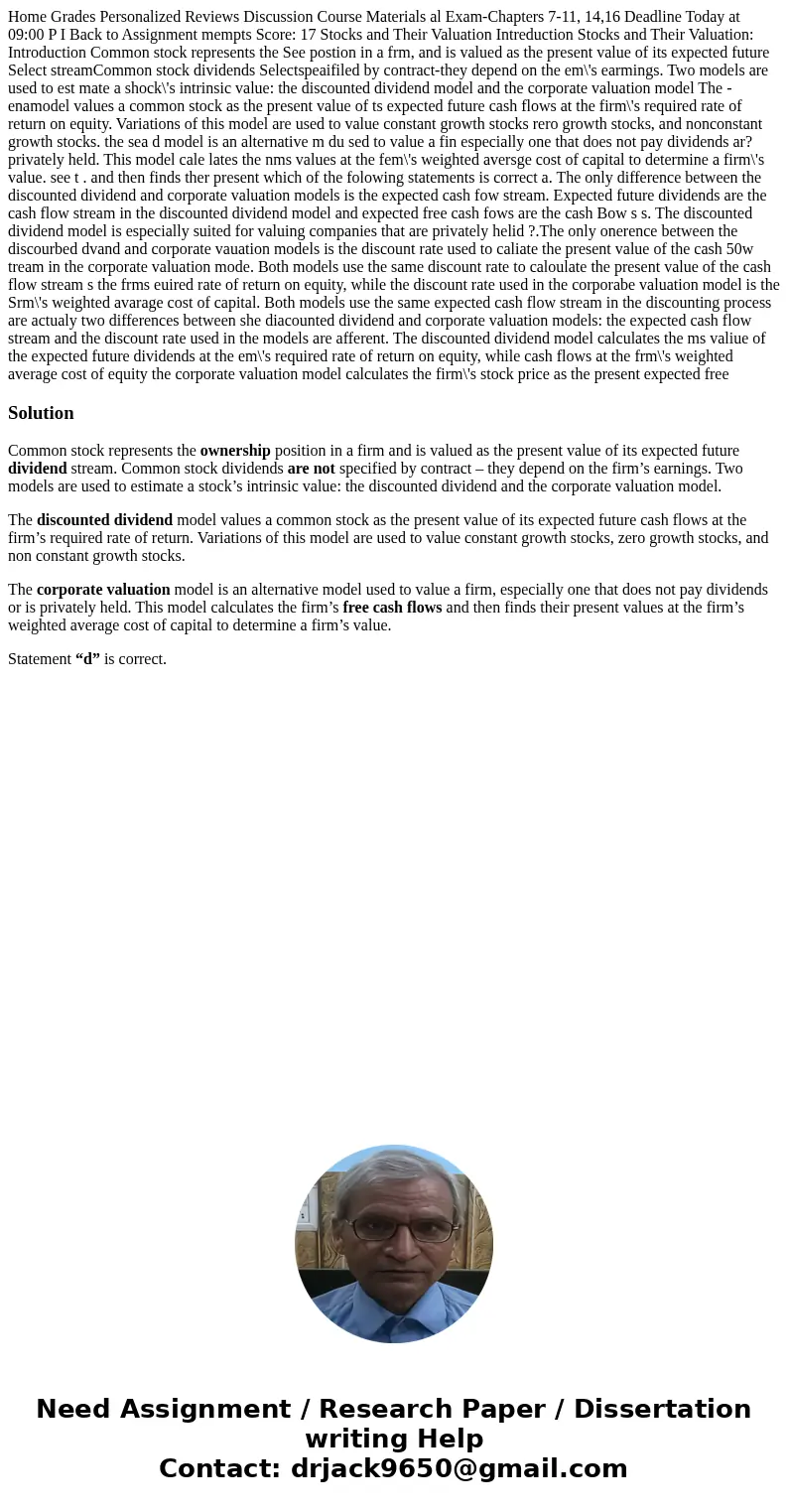Home Grades Personalized Reviews Discussion Course Materials al Exam-Chapters 7-11, 14,16 Deadline Today at 09:00 P I Back to Assignment mempts Score: 17 Stocks and Their Valuation Intreduction Stocks and Their Valuation: Introduction Common stock represents the See postion in a frm, and is valued as the present value of its expected future Select streamCommon stock dividends Selectspeaifiled by contract-they depend on the em\'s earmings. Two models are used to est mate a shock\'s intrinsic value: the discounted dividend model and the corporate valuation model The -enamodel values a common stock as the present value of ts expected future cash flows at the firm\'s required rate of return on equity. Variations of this model are used to value constant growth stocks rero growth stocks, and nonconstant growth stocks. the sea d model is an alternative m du sed to value a fin especially one that does not pay dividends ar?privately held. This model cale lates the nms values at the fem\'s weighted aversge cost of capital to determine a firm\'s value. see t . and then finds ther present which of the folowing statements is correct a. The only difference between the discounted dividend and corporate valuation models is the expected cash fow stream. Expected future dividends are the cash flow stream in the discounted dividend model and expected free cash fows are the cash Bow s s. The discounted dividend model is especially suited for valuing companies that are privately helid ?.The only onerence between the discourbed dvand and corporate vauation models is the discount rate used to caliate the present value of the cash 50w tream in the corporate valuation mode. Both models use the same discount rate to caloulate the present value of the cash flow stream s the frms euired rate of return on equity, while the discount rate used in the corporabe valuation model is the Srm\'s weighted avarage cost of capital. Both models use the same expected cash flow stream in the discounting process are actualy two differences between she diacounted dividend and corporate valuation models: the expected cash flow stream and the discount rate used in the models are afferent. The discounted dividend model calculates the ms valiue of the expected future dividends at the em\'s required rate of return on equity, while cash flows at the frm\'s weighted average cost of equity the corporate valuation model calculates the firm\'s stock price as the present expected free
Common stock represents the ownership position in a firm and is valued as the present value of its expected future dividend stream. Common stock dividends are not specified by contract – they depend on the firm’s earnings. Two models are used to estimate a stock’s intrinsic value: the discounted dividend and the corporate valuation model.
The discounted dividend model values a common stock as the present value of its expected future cash flows at the firm’s required rate of return. Variations of this model are used to value constant growth stocks, zero growth stocks, and non constant growth stocks.
The corporate valuation model is an alternative model used to value a firm, especially one that does not pay dividends or is privately held. This model calculates the firm’s free cash flows and then finds their present values at the firm’s weighted average cost of capital to determine a firm’s value.
Statement “d” is correct.

 Homework Sourse
Homework Sourse